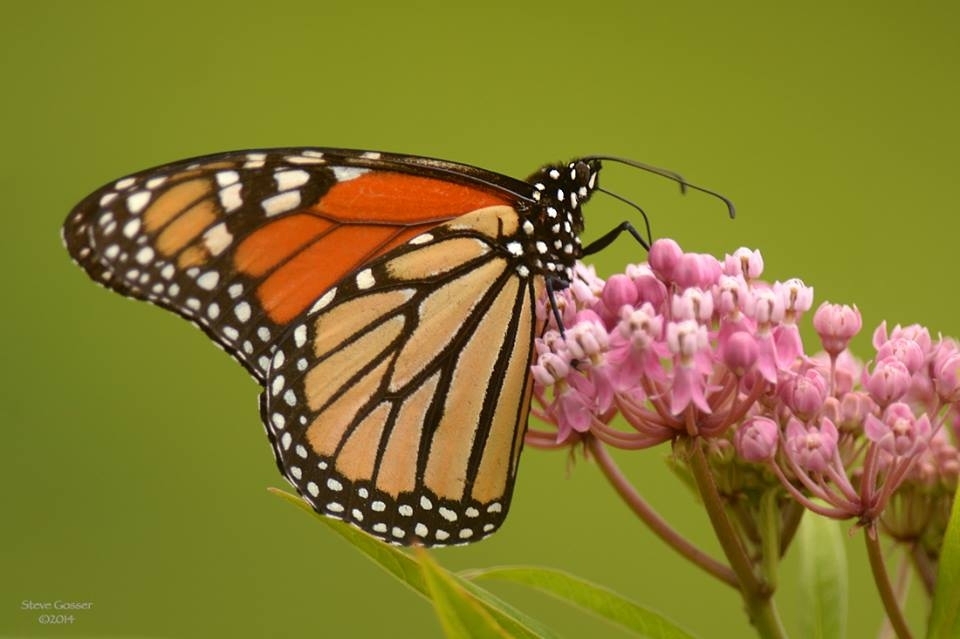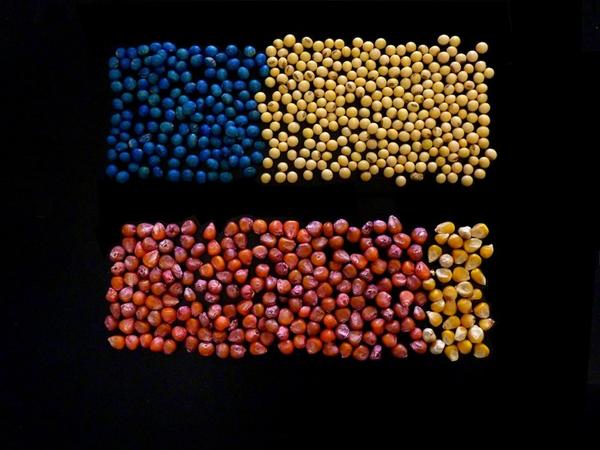
31 July 2024
Have you seen any monarch butterflies this summer?
Twenty years ago this question would have been absurd in late July, but this year nature observers are worried that they have seen only one monarch butterfly so far … or none at all. There are two reasons why monarchs are scarce. One is the symptom, the other is the cause.
The Symptom: According to World Wildlife Fund, last winter’s annual survey of monarch butterflies on their wintering grounds in Mexico found that “the species occupied only 2.2 acres during the 2023-2024 winter season — 59% less than the previous year when scientists observed 5.5 acres.” There are 59% fewer monarchs this year compared to last. UPDATE: See Christine Rickabaugh’s comment below with the backstory on what’s happening in Mexico.
The Cause: Since the 2010’s biologists have warned that we are experiencing an Insect Apocalpyse. They have declined an alarming 75% in the past 50 years. The reasons for decline have been hard to tease out because there are so many factors at work.
Fortunately scientists at Michigan State University conducted a comprehensive study on the effect of herbicides and insecticides on insects, and especially on monarch butterflies (Danaus plexippus), in the Midwest. Published last month in PLOS One the study collected recent and historical data from Wisconsin, Michigan, Iowa, Illinois, Indiana and Ohio. MSU Today describes the findings.
While habitat loss, climate change and pesticides have all been implicated as potential causes for the declining insect abundances being observed globally, this work was the first comprehensive long-term study to evaluate their relative effects. Using 17 years of land use, climate, multiple classes of pesticides and butterfly survey data across 81 counties in five states, the researchers found that shifts in insecticide use toward neonicotinoid-treated seeds are associated with an 8% decline in butterfly species diversity across the American Midwest.
These findings include the decline of the migratory monarch butterfly, which has been a prominent concern. Specifically, it is noted that insecticides rather than herbicides are the strongest pesticide factor associated with monarch declines.
— Michigan State University: Insecticides found to be primary driver of butterfly decline
Neonicotinoids are so deadly to insects because they are so pervasive. Applied to the soil or as a seed coating, they migrate into the soil, the plant, its pollen, the water table and the air. This diagram shows the transport of neonics as red dots. They are everywhere.

The biggest danger comes from agricultural use. In 2017 the percentage of soy and corn planted with neonic seed coatings (colors below) was high. Now it’s even more.

Neonicotinoids are so effective that they create places without insects. These biological wastelands are missing everything that depends on insects, all the way up the food chain. This cornfield is a wasteland. There are no bugs and no birds here.

And the sneaky part is that you may be putting neonics on your grass or in your garden without realizing it. If you (or your lawn care company) sprays your grass it may well contain neonics. The potting soil and plants you buy at the store are probably treated with neonics before you buy them. Suddenly your lawn and garden are deadly to the butterflies and bees you’re trying to attract. Read more about it in the PDF linked below (or here).

It is going to take a concerted effort from all of us to remove neonicotinoids from our environment and stop the decline of insects. The best time to begin is right now.
p.s. EPA proposed an interim decision on neonicotinoids to protect pollinators. Alas, it says they are proposing “management measures to help keep [neonictinoid] pesticides on the intended target.” Good luck with that. Neonics never stay in one place.
Kate,
I have been capturing and releasing Monarchs for twenty some years and this year is horrible in terms of numbers. Over the last several years I have watched the decline to the point it is now in free fall. Other insects too including aphids on my milkweed!
It is not looking good sorry to say.
We have not seen a single Monarch this summer. Despite the fact that I do not treat our lawn and have a healthy population of milkweed plants. Not one.
I have seen virtually no butterflies of any kind this year. Usually I have lots of different ones.
Near Buffalo NY and I’ve only seen two male butterflies. Normally by now we would have released 50+ butterflies and i haven’t even found an egg yet this year sadly. i thought last year was bad because of the late frost and this year has sadly been much worse.
I have butterflies but no monarchs. Not one seen as yet,
Lots of milkweeds; zero Monarchs here in Pleasant Hills (south of the City of Pittsburgh).
I was just in Michoacán Mexico this past spring for the monarch migration. One out of three of the sanctuaries was closed due to the butterflies freezing from a fluke snowstorm three weeks before I got there in March.
I have also learned that the cartel has quite a bit to do with taking out the forest where they overwinter. they are overlogging the forest to plant avocado trees they are also diverting the water to the avocado farms. They have recently released a documentary revealing what is actually going on down there.
The name of the documentary you can find it on Netflix is called the Guardian.
I know this is not the main reason, but it sure does have a lot to do with it.
If there overwintering biosphere is taken away from them, then there’s no place for them to go to safely over winter.
I highly advise watching the video.
This is such a sad state of affairs for our pollinators and all of our insects here in the United States, Canada, and in Mexico.
I too have seen a sharp decline in the number of Monarch butterflies and eggs here in New Jersey. We need to make more noise about the cause and make people wake up!!!
Southern Butler County, 2 monarchs seen. No eggs. I have found a few larvae.
Happy news from my sister in Tidewater Virginia: Lots of monarchs there
I haven’t seen a single Monarch this season. My milkweed is untouched and forming seed pods. SW Beaver County, Pennsylvania.
I have only seen two monarchs recently and one instar 3 caterpillar earlier. I have lots of common milkweed on my property, including many right around the house. I have many other flowers and have been seeing several species of butterflies. I live in West Central PA in Northwest Clearfield County near DuBois.
2023, we spotted our first monarch at the end of May. We raised and released over 50 by the end of the season.
This year, the first monarch in our yard wasn’t spotted until July. We have only seen one male and three females. So far, we have collected 17 caterpillars to shelter. Time will tell what happens the rest of the season. Here in Western Pennsylvania, we’ve had some pretty severe storms on top of drought, so I’m not sure if that delayed their arrival.
Zero monarchs and no eggs. Lots of milkweeds that have previously hosted caterpillars. Very few butterflies in general seen in Stanton Heights despite many pollinators in bloom.